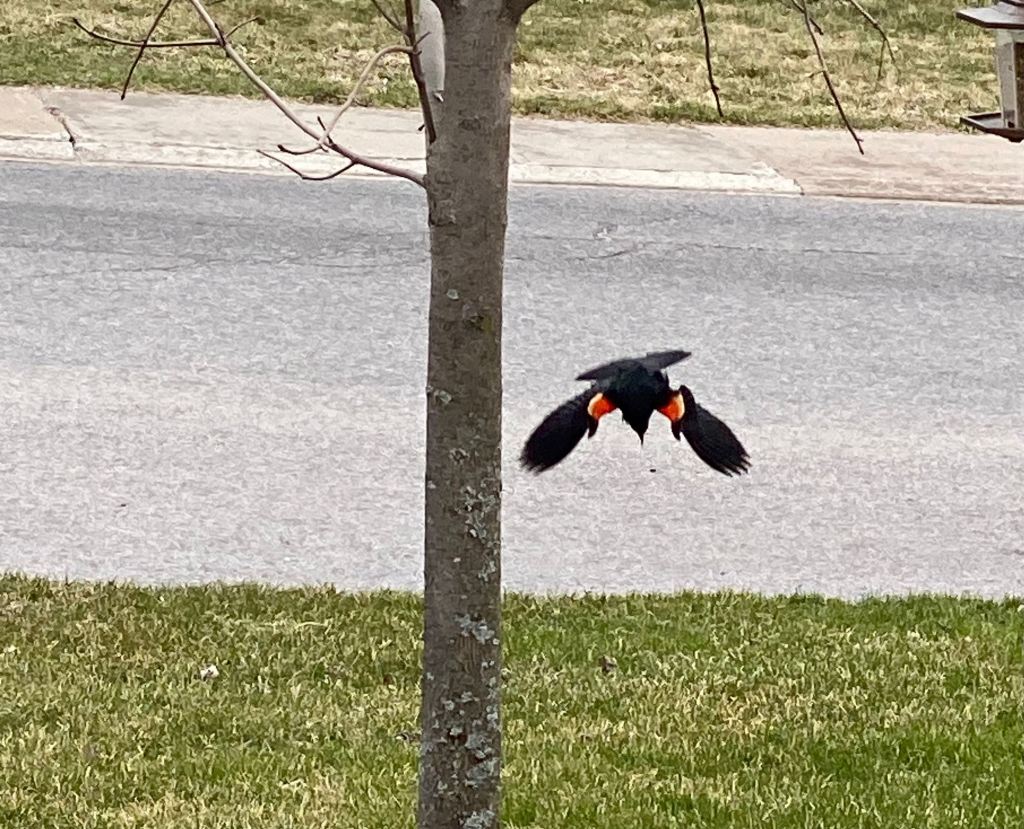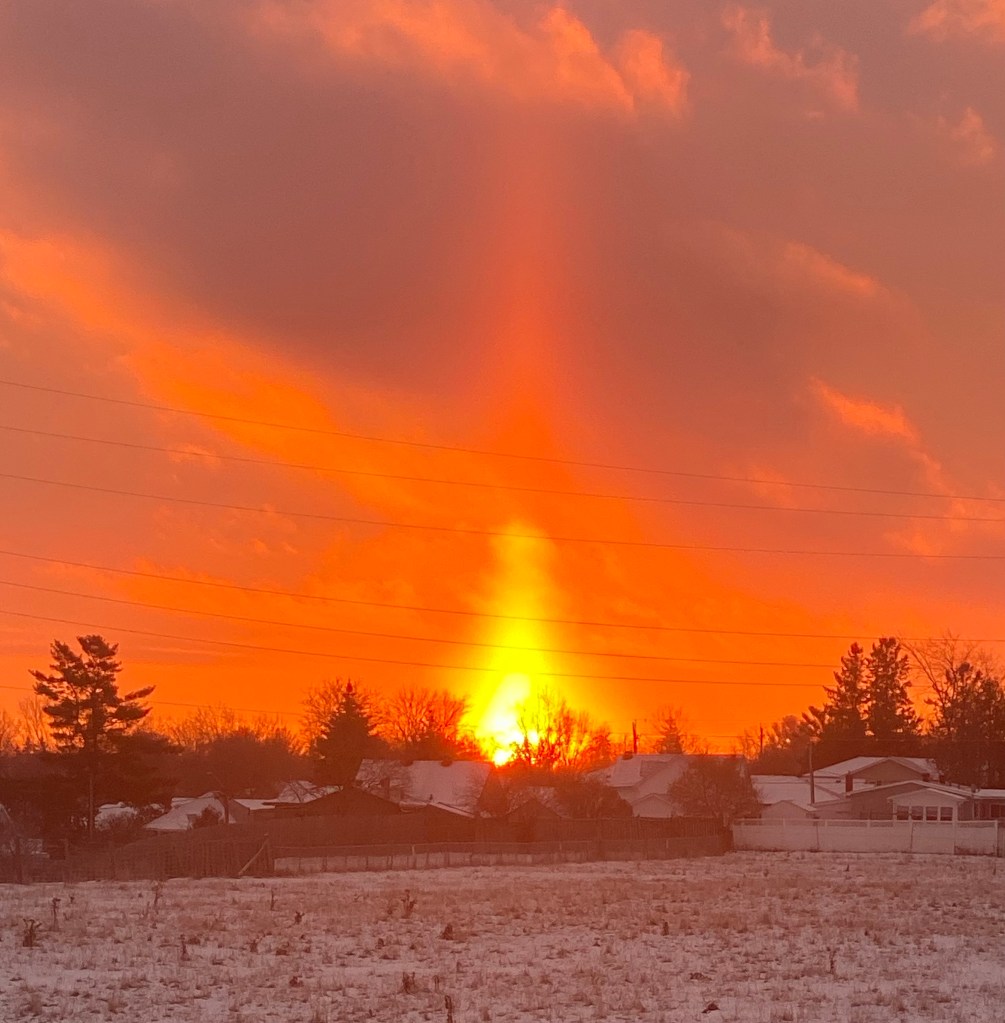
When confronted with obstacles, challenges and frustrations, what is our natural impulse? What do you do? I, for one, react by trying to do it all by myself. Go it alone. Problem is, as challenges mount and obstacles grow larger and there doesn’t seem any end in sight to all that is wrong in the world today, that strategy – going it alone – is less and less effective to say the least.
It takes a river, and some massive Falls to suggest another way.
Last week I began what is turning out to be, for me, a season of long-distance trips over the next few weeks and months. It started with a church meeting in Niagara Falls – the farthest distance from home that I have been in over three years.
“Then the angel showed me the river of the water of life, bright as crystal, flowing from the throne of God …”[1] The vision of God presented to us from John’s revelation in the last book of the bible is not always consistent with our human tendency to react against the obstacles we face. While God’s vision is of wholeness and union, we tend to go the opposite direction. We would rather divide and conquer.
We are motivated by so many conflicting and competing impulses and desires. Left alone to our own devices, we don’t get very far. And, usually, we will make a mess of things. And yet, if we seek and are honest about our desire to be healed from whatever ails us, we must come to terms with our natural impulse to go-it-alone.
The man lying by the pool called Beth-zatha had been ill for thirty-eight years. He had tried everything, it seems, to find healing for himself. “Sir, I have no one to put me into the pool when the water is stirred up; and while I am making my way, someone else steps down ahead of me,” he complains to Jesus. [2] Left to his own devices, relying on his own resources, he had gotten nowhere.
Why Jesus had chosen him, and none other, of the many invalids that populated the pool side, is another question that confounds our fierce independence. Perhaps there was a reason, a mission, a purpose for the man whom Jesus heals in this Gospel text.
“Let your way be known upon earth, your saving health among all nations.” In the Psalm for today, the phrases “all the nations” and “the peoples” and “all the ends of the earth” appear no less than nine times in seven short verses.[3]
Health and healing are for the nations, for the purpose of the well-being of all people. As I stood at Niagara Falls, in the corner of the pedestrian mall close to the ledge overlooking the thundering waters, I saw down the gorge dividing Canada and the United States. And the text from Revelation popped into my mind: “On either side of the river is the tree of life … for the healing of the nations.”[4]

The tree of life “on either side of the river”. What do you make of that? The tree of life shows up in the garden of Eden, mentioned very early in the first book of the bible.[5] But by the end of the bible, in the last book and the last chapter for that matter, there are now at least two, it appears.[6]
On either side. Not one side or the other. Not we’re right, they’re wrong. Not someone wins and someone loses. Not just for me and my kin. Not God is on our side, never yours. Not me-first, then you.
The vision of God is: On either side. On both sides of the question. On both sides of the dividing line. It seems that it takes a whole bible and a whole lot of stories about the topsy-turvy relationship between God and God’s people for it to finally get worked out. God is on all sides, by the end of it all. Good news!
So, what did the healed man do? What was his purpose? After Jesus told him to “stand up, take your mat and walk”, where did he go? Did God have a purpose for him, besides inciting a growing conflict between Jesus and the religious leaders because he healed on the sabbath?
A few verses later, we read that afterwards “Jesus found him in the temple.”[7] We may wonder why, after thirty-eight years of illness would someone to go to the temple after being made well. There could be many possible reasons. But a good guess is that his heart was bursting with thanksgiving. And he wanted, first and foremost, to praise God for the gift of grace.
Another clue may be why Jesus himself came up to Jerusalem in the first place, just before going to the pool. There was a “festival of the Jews”.[8] Some suggest that this festival was Tabernacles, or Booths.[9]
This festival was Israel’s Thanksgiving. The Feast of Tabernacles was a reminder of when God delivered Israel, through Moses, out of slavery in Egypt and their time in the desert. The Israelites lived in tabernacles or booths on their 40-year journey to the Promised Land. To celebrate this festival was to give thanks to God for all the blessings the people have received throughout their history.
The people. All the nations. To the ends of the earth. Thanksgiving opens our hearts. Thanksgiving expands our hearts.
Wherever this Gospel text leads us in our contemplation of new life in Christ during this Easter season, one thing, I think, is clear: The man who was healed couldn’t go it alone. He couldn’t do it by himself. He needed someone else to help him.
Whatever we would say about this time in our lives—the confusion, the uncertainties, and ambiguity of post-pandemic reset, the longing for healing and wholeness so many of us seek at different levels—individually, socially, mentally, physically, spiritually, financially—one thing is sure: We can’t do it on our own. We can’t pretend that we don’t need any help.
Wherever Jesus is found in his post-resurrection appearances, it is always with others, healing others, inspiring others, helping others, challenging others, comforting others. Where two or three are gathered in his name, Jesus is there with them.[10]
May the waters of our baptism lead us down the river, embracing both sides of the divide, to the healing of all. And it all starts by reaching out to, and receiving help from, another, who comes to us.
Thanks be to God!
[1] Revelation 22:1
[2] John 5:1-9
[3] Psalm 67
[4] Revelation 22:2
[5] Genesis 2:9
[6] The Greek has “tree,” which is used in a collective sense of trees on both sides of the river.
[7] John 5:14
[8] John 5:1
[9] 1 Kings 8:2; Nehemiah 8:14. Tabernacles is the only Jewish festival that is commonly called simply “the festival”. Other holidays in the Gospel of John are always referred to by their particular names – “the festival of Dedication” (John 10:22) and “the festival of the Passover” (John 13:1)
[10] Matthew 18:20


